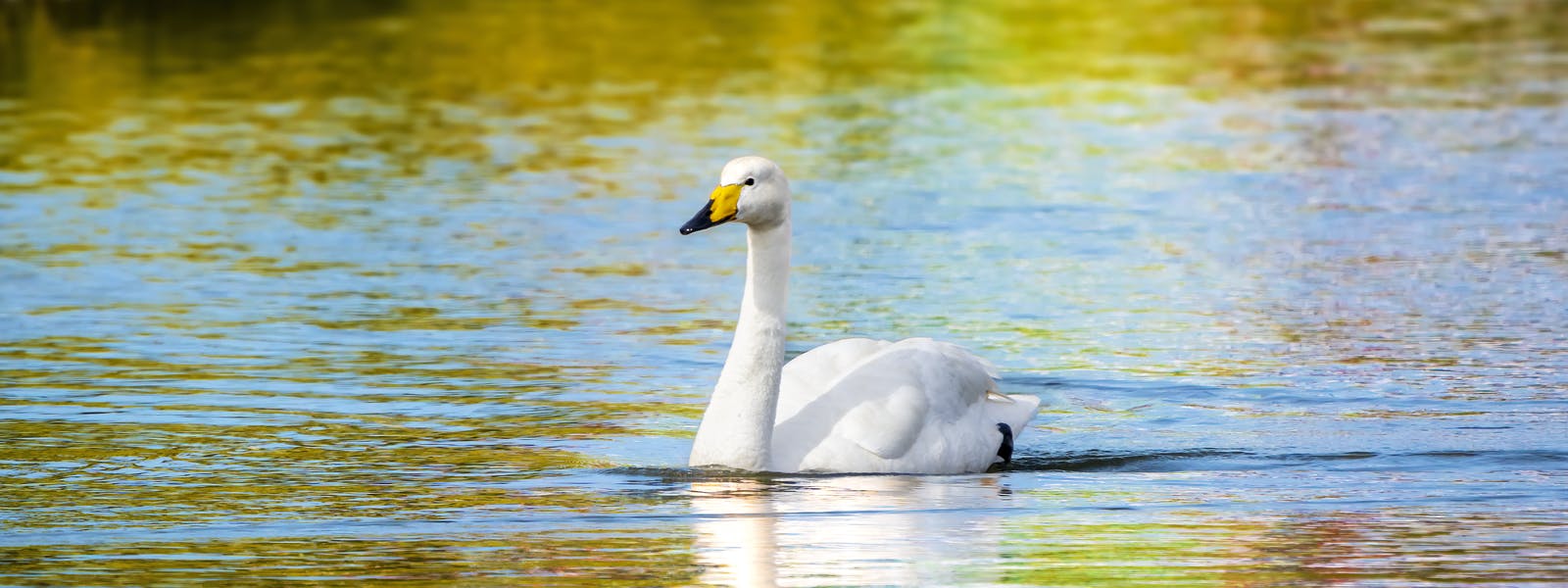
Spot the Whooper Swan
Isn't it Elegant?
There is something romantic and adventurous about swans (Cygnus); they appear in many fairy tales as a symbol of purity and innocence. The loyalty of the swan pair toward each other and their breeding site is well known and appeals strongly to people. The whooper swan (Cygnus Cygnus), sometimes called the common swan, belongs to the order Anseriformes along with geese and ducks, but is the only species in Iceland that belongs to the genus Cygnus.
Embark on a captivating journey to unravel the enchanting secrets of Icelandic nature and wildlife by immersing yourself in the rich offerings of the Perlan Museum in Reykjavík. Here, you will find interactive exhibits that invite you to delve deeply into every facet of Iceland's awe-inspiring wonders. This unique and immersive experience, carefully curated for visitors of all ages, consolidates the diverse beauty and ecological richness of Iceland into a single, remarkable destination at the Perlan Museum. Learn more about Icelandic nature and wildlife here.
Identifying Whooper Swans by Size, Grace, and Arctic Elegance
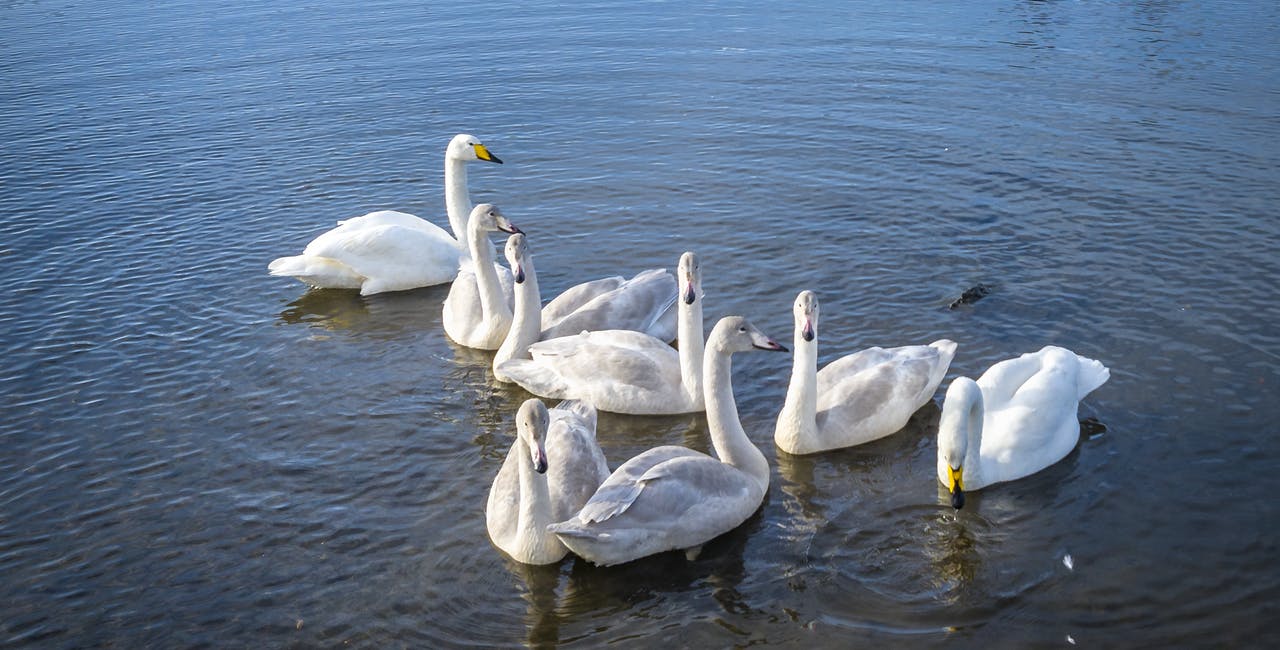
It is easy to distinguish whooper swans by their white colour, long neck, and size. An adult whopper swan weighs 6 - 12 kilograms (13-26 lbs) and is one of the world's largest flying birds. To take off for flight, such a massive body needs a good runway to flap the big wings. The wingspan of the whooper swan can exceed 2.5 metres or 100 inches.
An adult has black feet but a yellow bill with a black tip. Juveniles have dark bills and feet. They are light grey but become whiter with age, maturing at the age of 3-6 years. The whooper swan is the largest bird in Iceland; not even the white-tailed eagle (Haliaeetus albicilla) comes close in size to a fully grown male.
Whooper Swans' Appetite for Plants and Icelandic Landscape
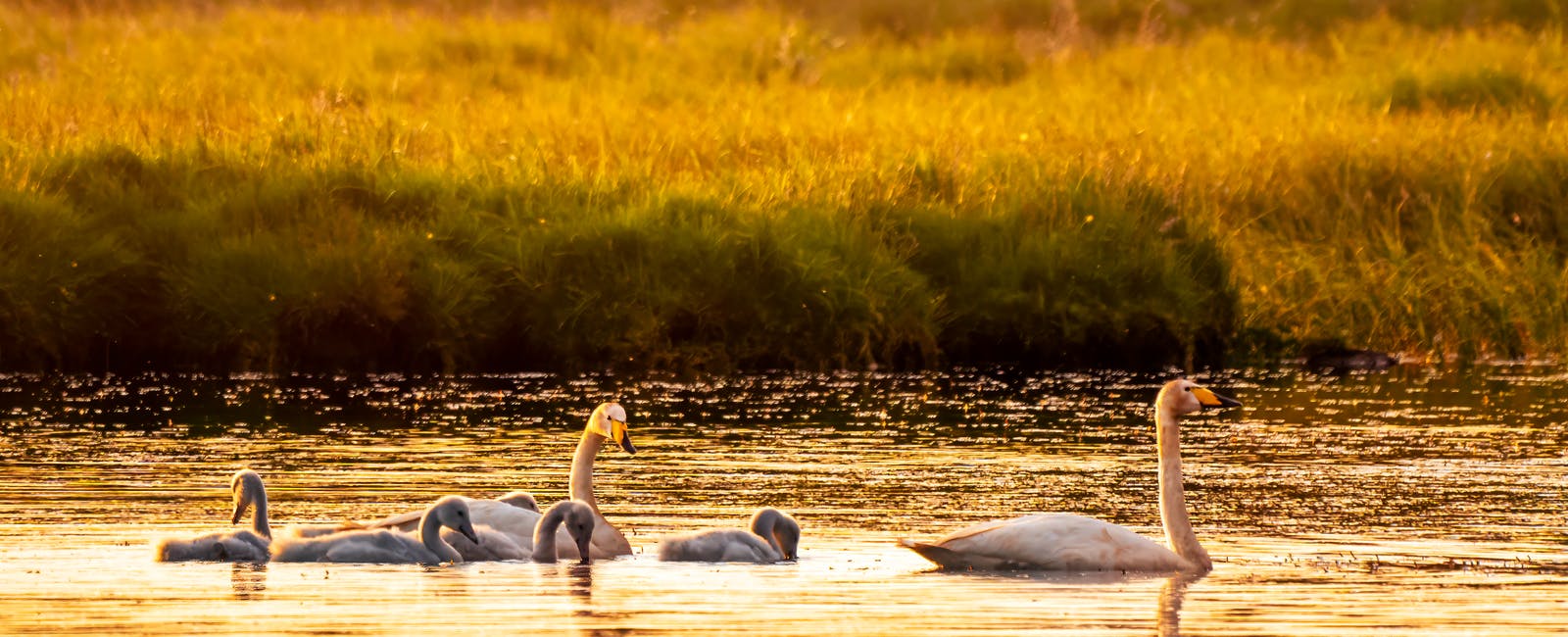
To maintain such a large body, the whooper swan must feed heavily on plants and herbs. During spring and summer, they remain in wetlands and feed on all kinds of water plants. They are also seen at the seashore, where they feed on common eelgrass (Zostera marina) and seaweed. Whooper swans are often in great numbers in grass-, grain- and potato fields during spring and autumn, where they can cause the farmers great damage.
Whooper swans are found all around the country, both in the highlands and lowlands. The Icelandic population has increased in recent years and is estimated at 30-35 thousand birds in the autumn. The breeding population is 5-6 thousand pairs. Most of the population migrate to Great Britain in the fall but arrive back in spring. However, a small group of swans stays in Iceland the whole winter, most of them on the West- and South Coast. They are also observed at Lake Mývatn and the pond in the centre of Reykjavík.
Feathers, Family, and Lifelong Love: The Whooper Swan's Story
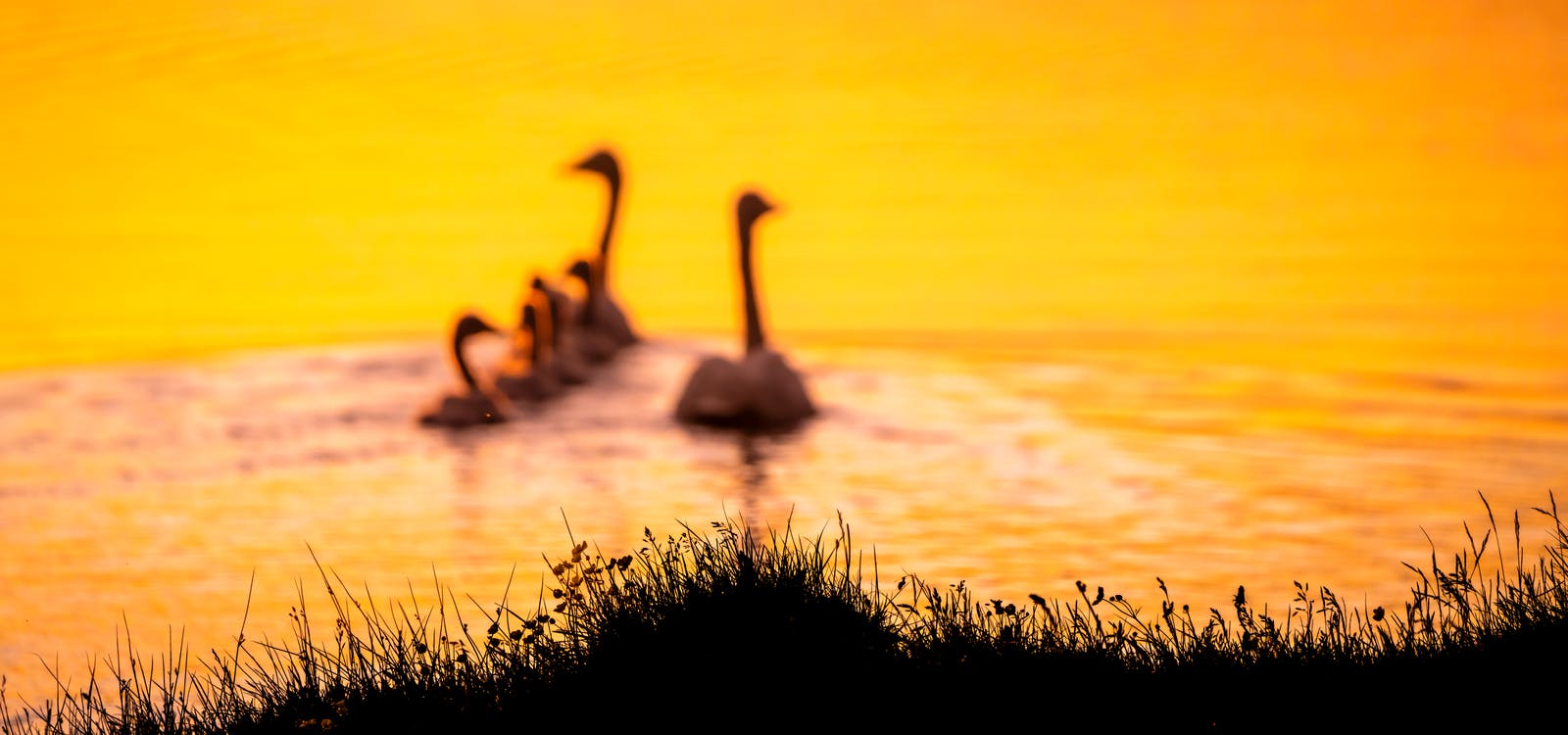
Like other waterfowl, the whooper swans moult their wing feathers and become flightless in late summer. This situation is called "being hurt ", as the wings can get quite bloody during the period. Back in the old days, Icelanders took advantage of the birds during moulting and slaughtered them for meat consumption. The most important moulting area for whooper swans is at Lón in eastern Iceland, where thousands of swans moult their feathers. It is estimated that 1/3 of the Icelandic population is at Lón during the peak moulting period.
The whooper swan pair has its own territory during the breeding season, which it defends from other swans and birds. The territory is usually close to a lake or a pond where the birds build a large nest for the female to lay 4-6 white eggs. The nest is a large pile of vegetation from the surroundings lined with down and feathers from the birds. Whooper swans often use the same nest if their breeding success has been high in previous years.
The incubation period is 35 days, and the female incubates while the male defends the territory. Both sexes care for the Cygnus, and the family stays together until leaving the country in late fall. Whooper swans pair for life, and couples are mostly loyal to each other. However, divorces and affairs do happen. The whooper swan can reach an old age as birds in their late thirties are common.
Fairytales, Folklores and Fashion
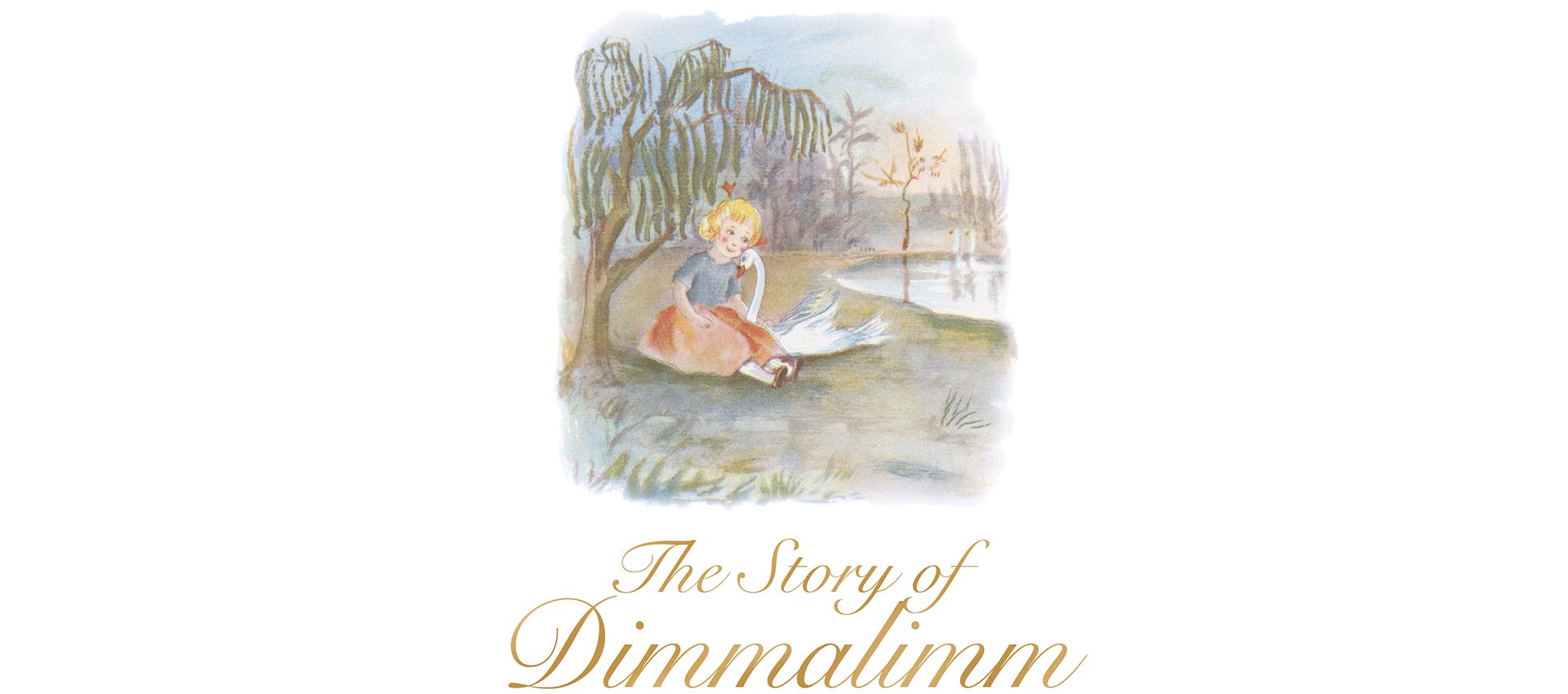
The mystique surrounding swans has been an inspiration for many writers and poets, resulting in fairy tales and poetry both in Iceland and abroad. A famous Icelandic fairytale is "Dimmalimm "(Muggur, Guðmundur Pétursson Thorsteinsson) from the year 1921, where a princess with her love saves a prince from a curse which had him trapped as a swan.
A musical for the story has been made (Atli Heimir Sveinsson), which has been in theatres on a regular basis. Swans also touched the heart of the world-famous writer H.C. Andersen, who wrote the story "The Ugly Duckling "in 1843. A Cygnus gets lost and stumbles upon a duck nest, where it is bullied because of its appearance, which is different from that of the ducklings in the nest, but everything goes well in the end. The elegant grace of swans has been a source of many famous music and dance projects. The Swan Lake (Pjotr Iljitsj Tsjaíkovskíj) is one of the most famous works based on the beauty of swans.
The Most Famous Dress in History?
Swans have also impressed fashion designers for decades, and many dresses resemble the white plumage of swans. Our very own singer, Björk Guðmundsdóttir, showed her affection for swans with an unforgettable dress during the Oscars Award 2001, a moment that went down in history.
Five Must-Know Information about the Whooper Swan
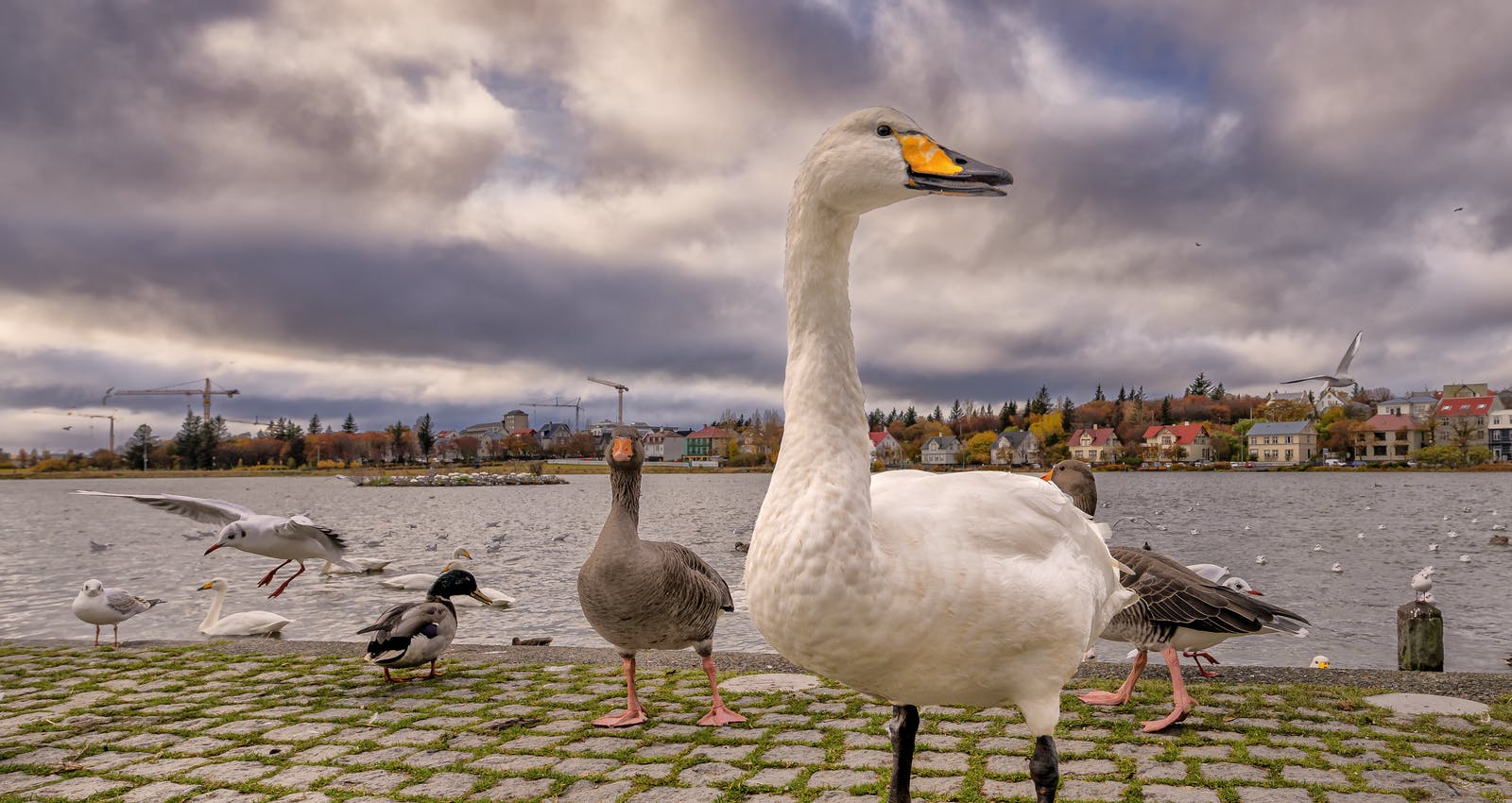
- Whooper swan feathers were expensive as they were used as pens for writing in the old days.
- Whooper swans are strong birds and aggressive in the breeding season. They can kill sheep and dogs and hurt fully grown people with their strong wings. It is not advised to go near a whooper swan nest.
- An adult whooper swan weighs up to 12 kilograms (26 lbs) and is one of the largest flying birds in the world.
- The wingspan of whooper swans can reach 2.5 metres or 100 in.
- Icelandic whooper swans have been protected by law since 1914.







